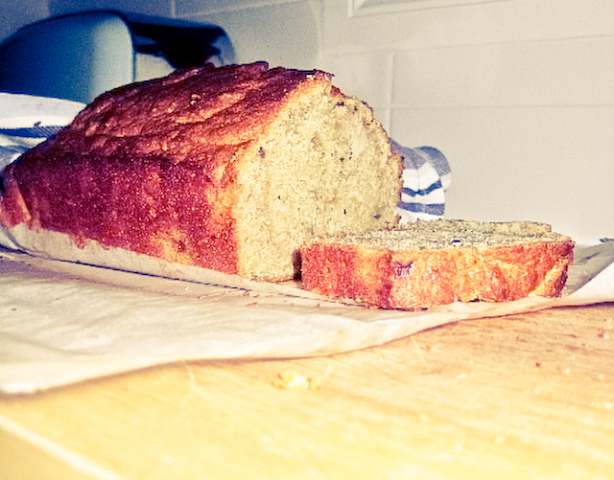Millet is great. Have you eaten millet? It’s a super grain.
It’s kind of like quinoa (high in protein, gluten-free, substitute for rice/couscous/flour), but is crunchier and is also:
* high in silica, which is great for bones
* soothing, especially for indigestion or morning sickness
* anti-fungal; helps ease Candida symptoms
* improves breath
This week I invited Melbourne acupuncturist and fertility specialist Natalie Kringoudis (visit her blog and her site The Pagoda Tree for her details) to share her love of the stuff. And a recipe.
But before I hand things over to her: a cheat sheet for you:
* Uses Millet can be used in porridges, cereal, soups and dense breads. It’s a great wheat-free substitution for couscous, as it has a similar consistency.
* Storing Look for yellow colored, raw millet in health food stores. Store in an airtight jar or glass container for 6-9 months.
* Preparation Rinse millet before cooking, and use one part millet to two parts liquid.
* Basic Millet
Prep Time: 2 minutes Cooking Time: 30 minutes Serves 4
Rinse 1 cup of millet in a grain strainer. Place in 2 cups of water with a pinch of salt in a pot with a tight fitting lid. Bring to a boil, reduce heat to low. Simmer 30 minutes.
More water may be added to make the millet a softer consistency.
*** I toast my millet lightly before cooking to give it a nutty flavor. No oil, just in a dry pan.
***An update. The generous reader “millet head” gave me this helpful advice regarding my issue with millet being a touch too crunchy (I boil the crap out of it and 45 min later it’s still snappy-of-mouth):
White French millets are impossibly resistant to softening, Isprout them instead.
If you are using the yellow millets, rinse, then soak in cold water overnight – and leave on your counter top with a gauze or muslin to keep any bugs out etc. Discard soaking water and cook with fresh water as usual. I like to add butter or ghee and sea salt once mushy ( consistency kinda like polenta).
Over to Nat:
Millet makes you fertile.
At my clinic, I specialise in fertility. Before you run off because you’re hearing the F word; STOP! Fertility doesn’t equal babies, it equals a healthy reproductive system with the potential to conceive. As a Dr. of Acupuncture, I know how that works – but needles alone are not the magic silver bullet to wellness.
Most people only become aware of Millet as an ingredient when they are told they need to avoid gluten. The thing is we can all benefit from Millet, especially when it comes to our health and our fertility.
Actually, it’s good for everyone
Millet is the grain you should be eating right now! It’s high in protein. It is also chocked full of B vitamins, especially B6 (the bomb for stress) as well as other goodies including folic acid (for the mummies to be) and calcium, potassium and zinc (essential for healthy sperm). Of course all these nutrients benefit everybody, not just those aiming to increase their fertility.
How to cook the stuff
Hulled Millet look like little balls, and they’re best soaked or cooked to soften them. They’re a great substitution for bulgur in salads like tabouli, or as a substitute to couscous. This week I used hulled millet in my weekly muffin recipe – this week it was raspberry and millet muffins.
How to use it as a flour
However, my favorite use of millet is for its flour. It’s a great substitute in sauces but I like to mix it in with other flours to make breads and muffins. One thing millet can’t do is make bread on it’s own (yup, trust me, I have tried!) It’s composition means it mixes best with wheat to make a risen bread however when millet is combined with xanthum gum it is suitable to make bread of the loaf variety. When I cook with Millet, I usually combine it with several grains including spelt flour to support the construction. It makes a slightly heaver bread to what many are used to in their diet but remember the health benefits. I encourage you all to give millet a go – you will reap the rewards of this little beauty!
Nat’s Banana Bread
(note: the below is not a gluten-free recipe)
1 cup of millet flour
1/2 cup of organic self raising flour (or if gluten intolerant, use spelt flour)
1 tsp of nutmeg
1/2 cup honey
3 ripe organic bananas
2 free range organic eggs
1 tsp good quality vanilla essence or vanilla bean
125gm melted butterGrease and line a loaf tin.
Mix dry ingredients together.
Melt butter and mix in with dry ingredients.
Add beaten egg.
Add mashed Banana’s, honey and vanilla essence and mix well.
Pour into loaf tin and bake for 45 minutes or until skewer comes out clean.
Enjoy warm from over with a smear of organic butter.



